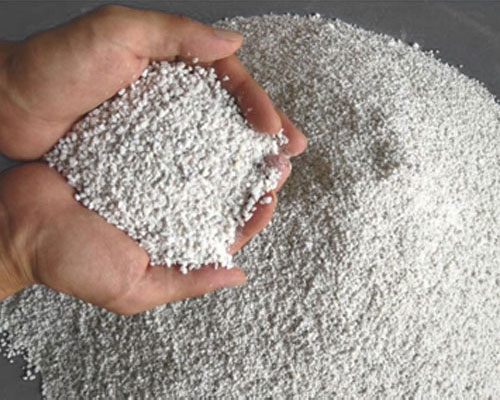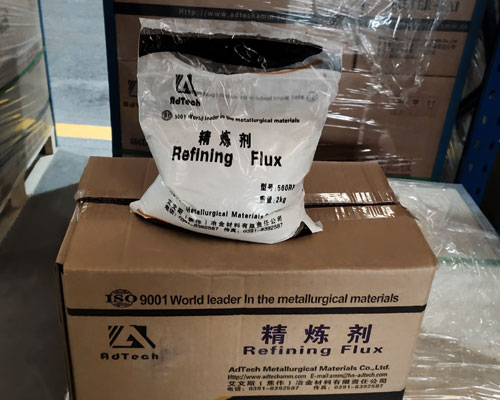The mechanism of the refining flux method is to absorb and dissolve the oxidized inclusions in the molten aluminum alloy and the hydrogen adsorbed on it, and float to the liquid surface to enter the slag to achieve the purpose of slagging and degassing. The purification effect is good, especially in the smelting of AL. Flux method must be used for Mg alloy or remelting cutting and shredding.
Refining Flux for Aluminum Alloy Features
- It does not chemically react with molten aluminum or dissolve each other.
- The melting point is lower than the refining temperature, the fluidity is good, it is easy to form a continuous coating on the surface of the molten aluminum to protect the molten aluminum, and the melting point is better than the casting temperature to facilitate the removal of slag.
- It can absorb, dissolve and break AL2O3 inclusions.
Refining Flux Performance
- Covering performance: the spreadability, which refers to the ability of the flux to automatically spread on the surface of the molten aluminum to form a continuous covering layer.
- Separation performance: Separation performance refers to the performance of automatic separation of flux and filtrate. The better the separation, the easier it is to pick up slag, and the less likely it is for flux to be mixed into molten aluminum and poured into castings without causing flux slag inclusion.
- Refining performance: Refining performance only refers to the ability of the flux to absorb, dissolve, and break the oxide inclusions in the molten aluminum.

It is necessary to choose refining flux that is surface-active to furnace gas and oxidized inclusions, that is, a flux with low surface tension, and the smaller the better.
Aluminum liquid and AL2O3 are complementary wetting, contact angle θ>130℃, if you can add elements that increase the wetting angle, it will improve the refining ability of the flux.
The addition of lithium, calcium, magnesium, bismuth, and other elements to the aluminum liquid will reduce the surface free energy between the aluminum liquid and the furnace gas, and make the coverage of the flux worse. The copper, silicon, zinc, iron, manganese, and nickel in the aluminum liquid Such non-surfactant elements have no effect on the surface free energy between the molten aluminum and the furnace gas, and do not affect the covering performance of the flux.
If the surface tension between the flux and the crucible is small, the flux will automatically attach to the wall of the crucible, leaving the molten aluminum exposed in the furnace gas and losing the protective effect of the flux.

